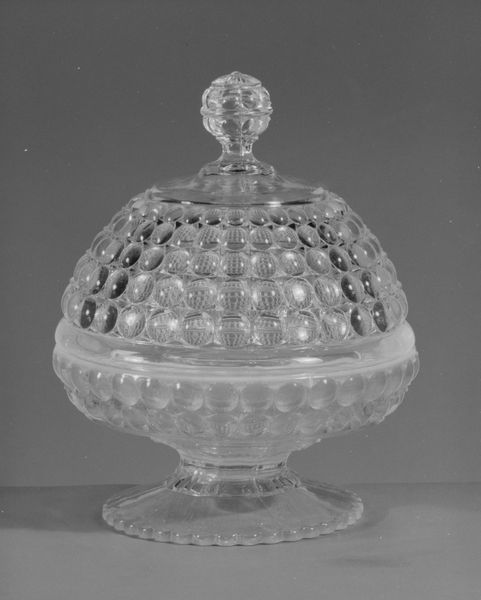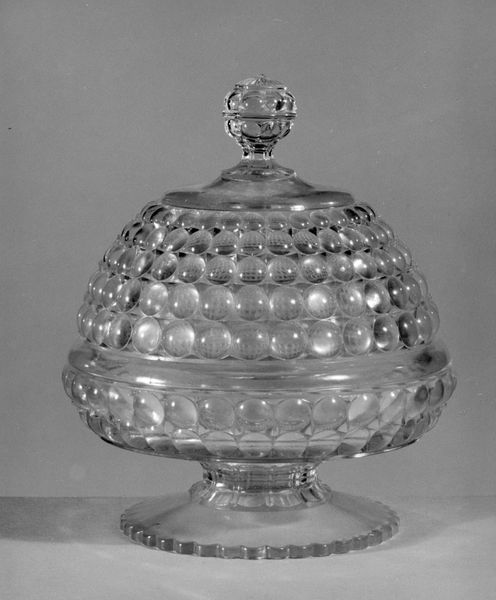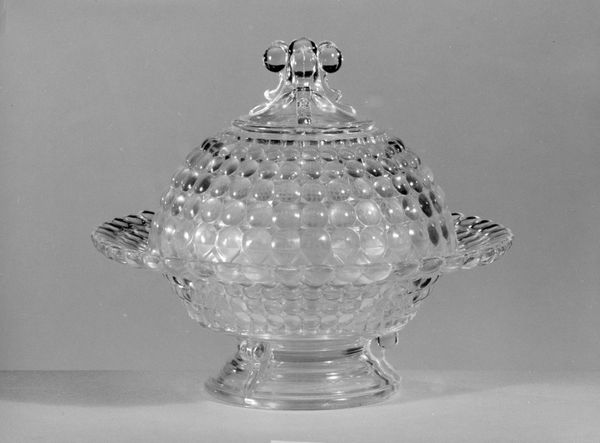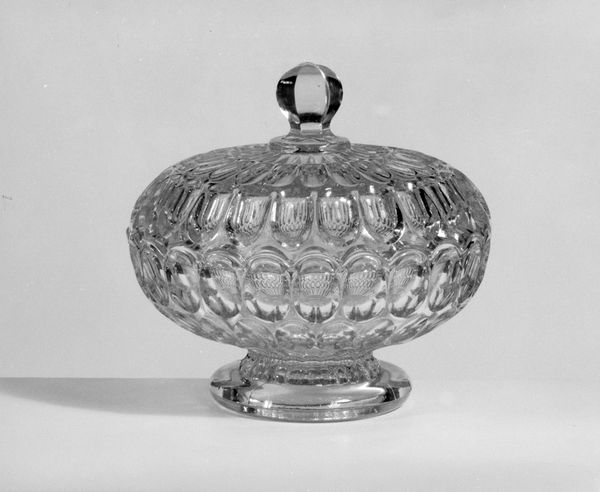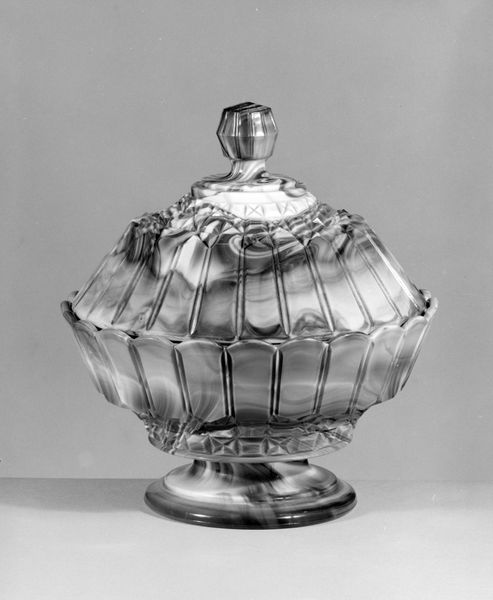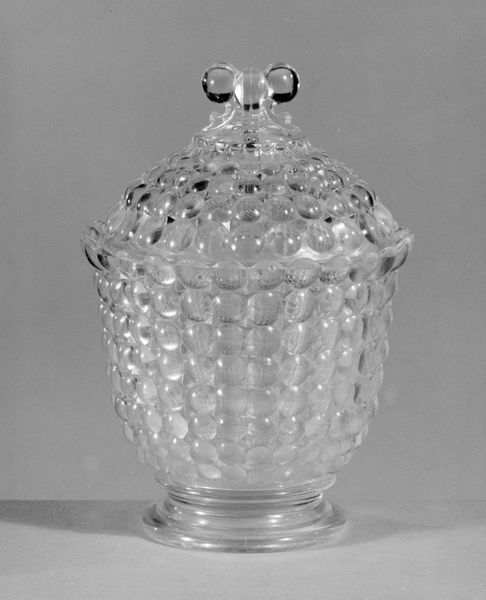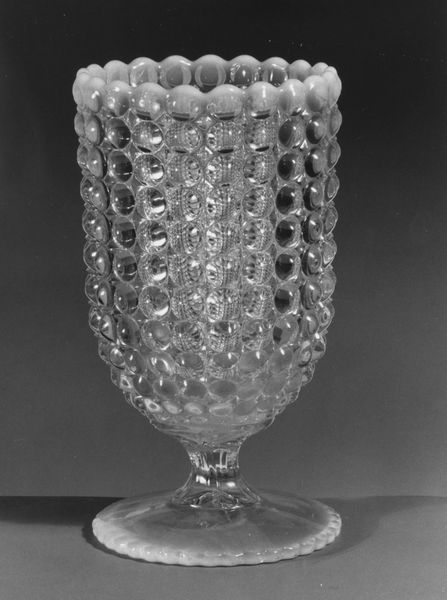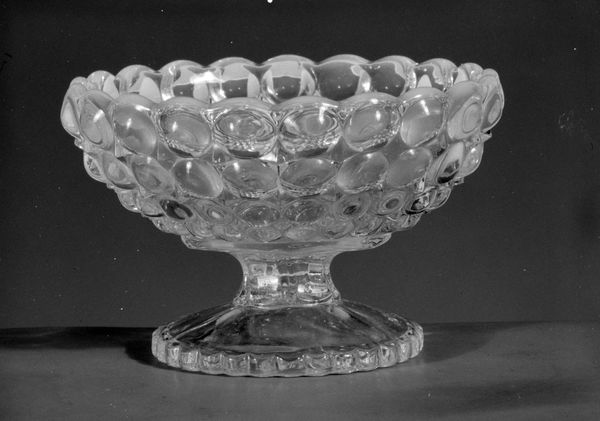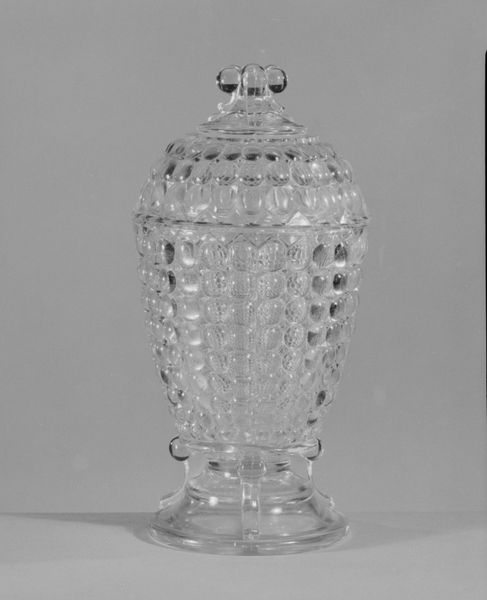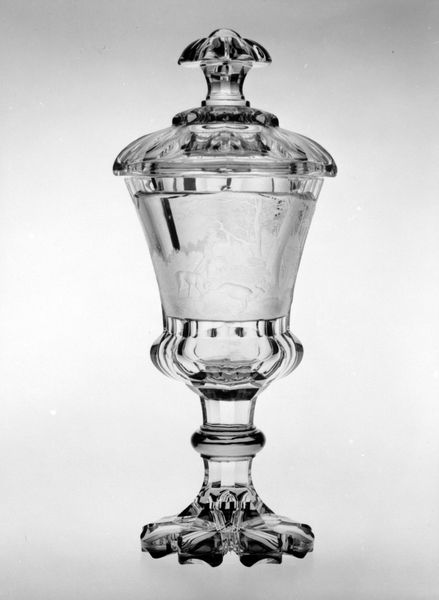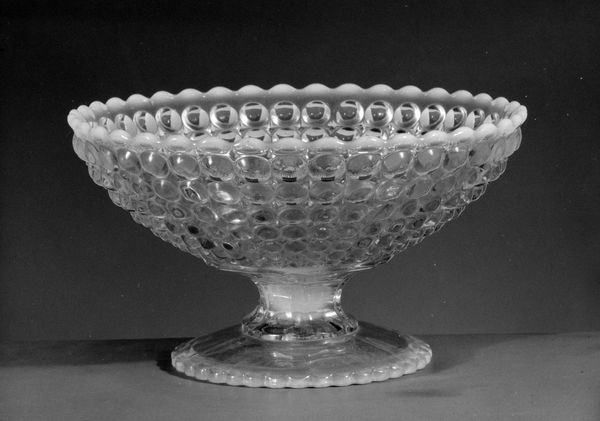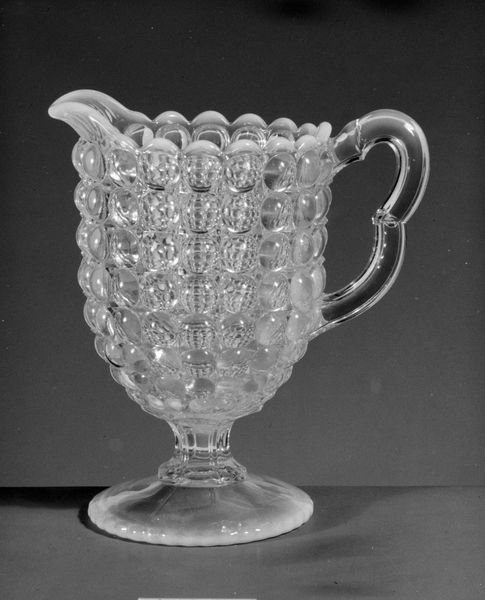
glass, sculpture
#
glass
#
sculpture
#
decorative-art
Dimensions: H. 8 5/8 in. (21.9 cm); Diam. 4 3/8 in. (11.1 cm)
Copyright: Public Domain
Curator: I'm struck by the immediate sense of lightness, almost ethereal quality of this piece. The clear glass and rounded forms seem to want to float. Editor: Indeed. What you’re responding to is the visual poetry rendered in glass by the Richards and Hartley Flint Glass Company. We’re looking at a sugar bowl, dating from approximately 1885 to 1888. It is currently held at the Metropolitan Museum of Art. Curator: The arrangement of those raised dots, creating almost a pebbled texture—it is highly considered. It draws light into its pattern. There’s a strong interplay of light and shadow across the vessel’s form. It makes the surface alive, restless even. Editor: Absolutely. This seemingly simple object holds so much. The history of glassmaking in America during this period is intertwined with the industrial revolution, technological innovation, and questions of accessibility to luxury items. Pieces such as these became status symbols within burgeoning middle-class homes. Curator: But isn’t it somewhat of an aesthetic contradiction? These rounded dots produce texture but it still looks so mass-produced. In short, why work this hard to make glass look like this? Is that merely taste and fashion of the period? Editor: Exactly! This type of glassware allowed families to emulate upper class decor and signal participation in modern consumer culture, despite limited access to handmade luxury goods. The molded "hobnail" texture also suggests abundance; one can find a plethora of decorative objects, just like the bowl promises full of sweetness! It’s democratized art and design meeting the Gilded Age. Curator: The sugar bowl truly embodies that moment where craft and mass production start a really complicated dance. It's simultaneously ordinary and carries aspiration. That contradiction reveals much about its era and about what the industry truly hoped for. Editor: That's wonderfully put. This modest container is reflective of the cultural narratives in which it emerged and continues to hold.
Comments
No comments
Be the first to comment and join the conversation on the ultimate creative platform.
